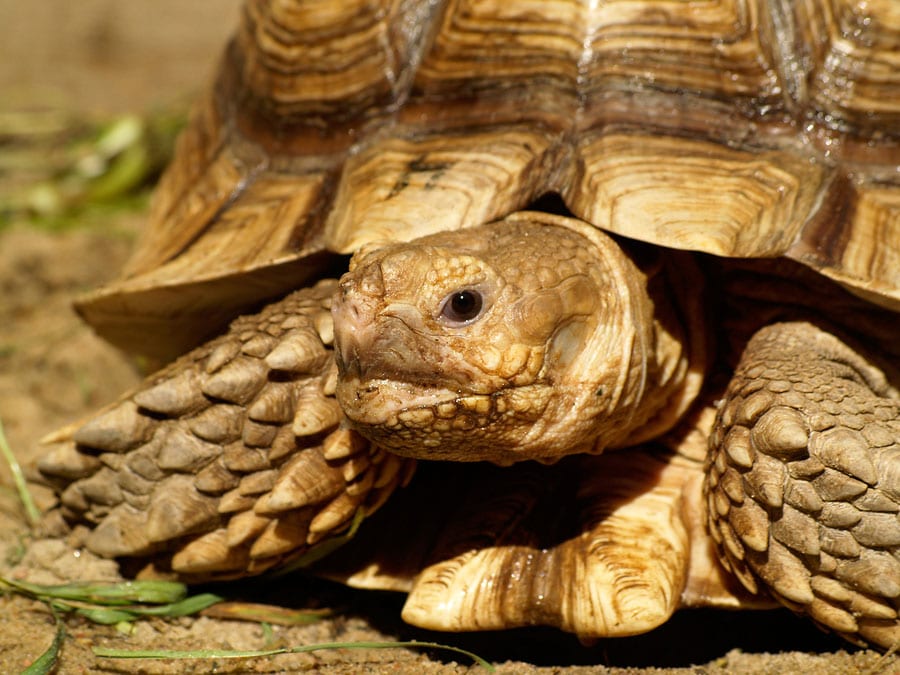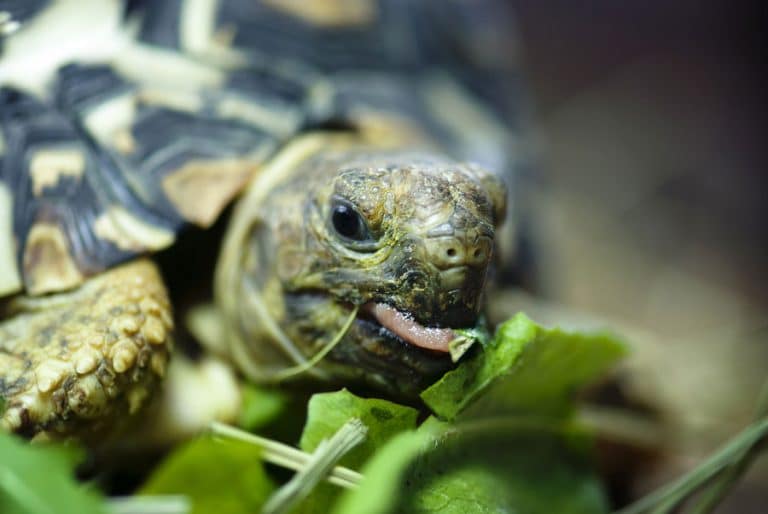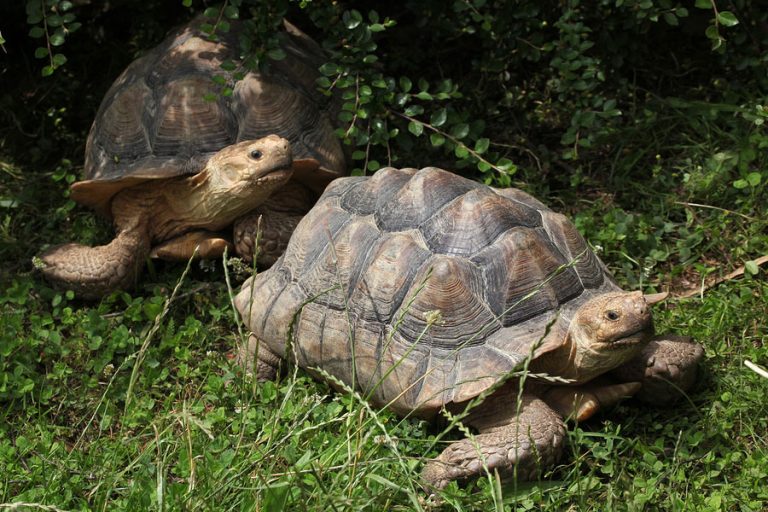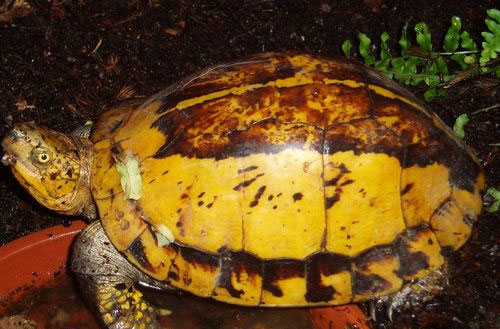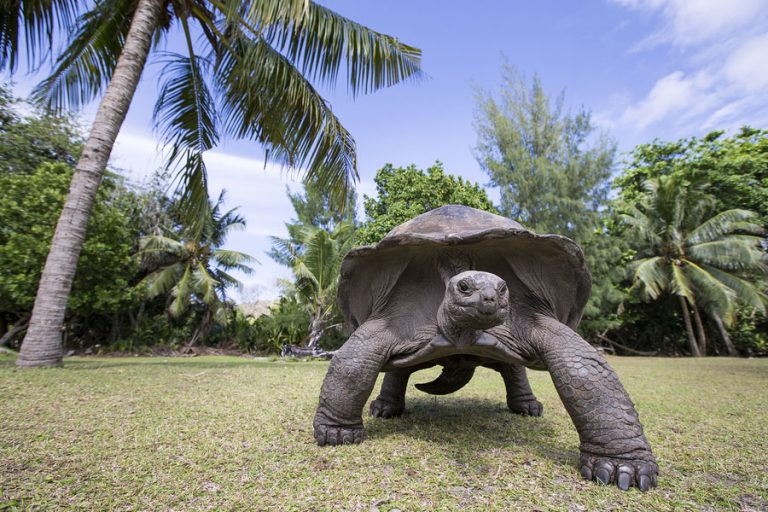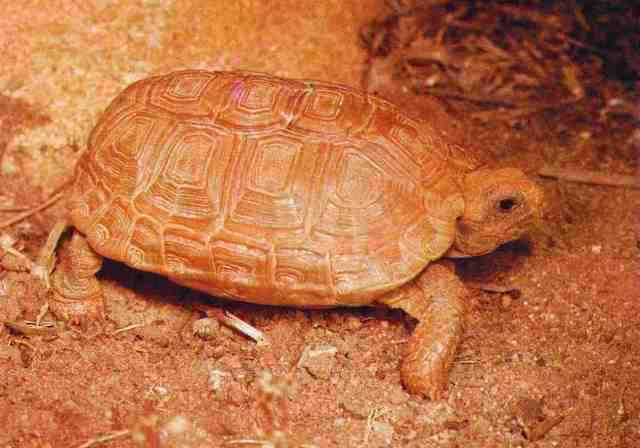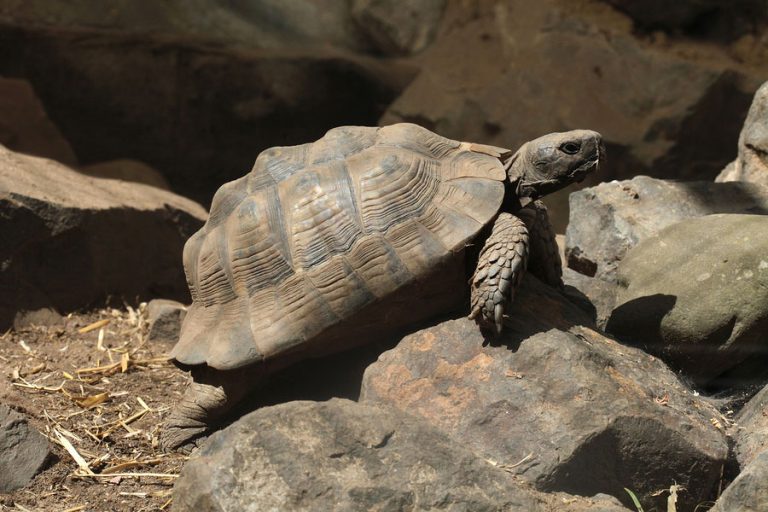African Spurred Tortoise
Scientific Classification
| Kingdom: | Animalia |
| Phylum: | Chordata |
| Class: | Sauropsida |
| Order: | Testudines |
| Suborder: | Cryptodira |
| Family: | Testudinidae |
| Genus: | Geochelone |
The African spurred tortoise Geochelone sulcata, known as African spur thigh tortoise, or sometimes as sulcata tortoise, is the world’s third largest variety of tortoises. It is also the largest variety of mainland tortoise, not seen on an island.
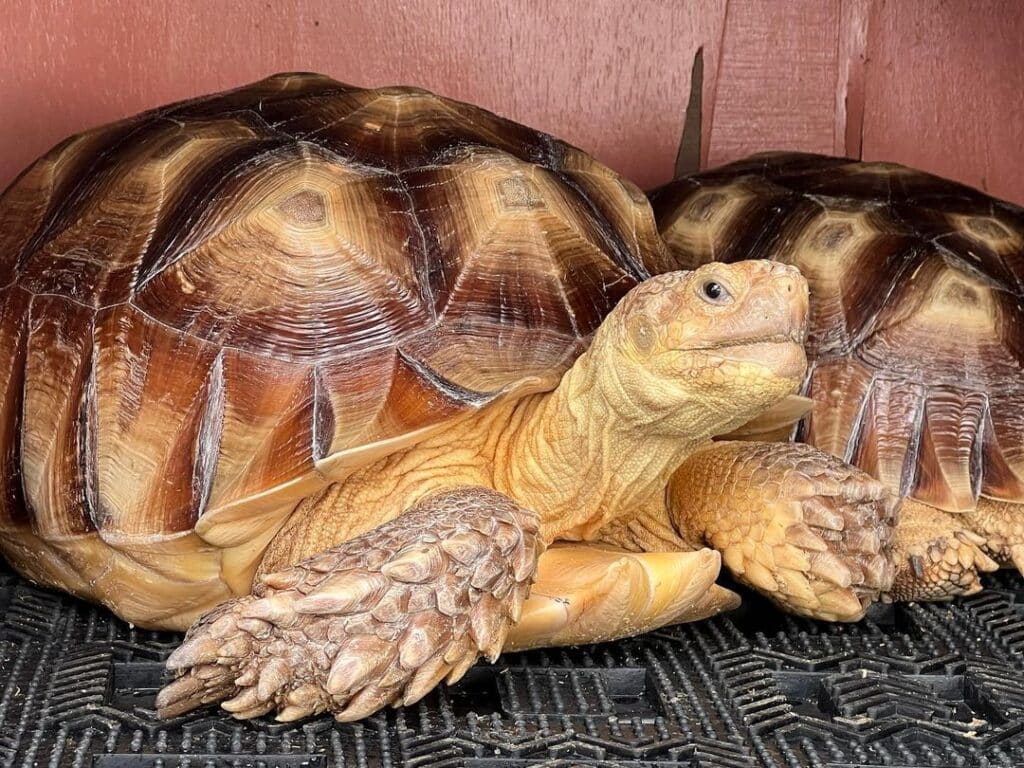
Anatomy
The adults are about 24’’ to 36” long and they weigh 100lb to 200lb (45kg to 91kg). During the initial years of their life, they develop from infant size of 2-3inches (15 – 25 cm) rapidly attaining (6-10”). The African spurred tortoise has a life span of 50 to 150 years and even much longer
Habitat
The African spurred tortoise inhabits the Sahel and the Sahara Desert, and partial dry grasslands, savannas and the thorny shrub lands, seen all over Chad, Ethiopia, Burkina Faso, Eritrea, Mauritania, Senegal, Mali, Sudan, Senegal and Nigeria. In order to get relief from the extreme heat during the peak hours of the day, in these dry regions, the tortoise digs burrows in the areas with moist soil and for shelter. These tortoises are characteristically calm and quiet by nature, and adapt well to homes as pets. Despite this, their keepers find it a challenging task to provide their exact needs in terms of temperature, diet and in handling their large size.
As a Pet
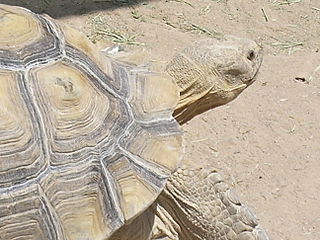
Housing
It is better to keep the immature and young sulcatas indoors and have proper control over the light and heat. A 10 to 20 gallon size terrarium is enough for one or two hatchlings, until they grow to a length of 3”. After this, you should take them to accommodation that is more spacious. When they attain the size of a basketball, you can consider starting to house them outdoors in all climates provided you make them a shelter for the cold days and nights.
Substrate
The ideal substrates for these tortoises are, Chipped aspen (Sani-Chips), newspapers, orchid bark and perhaps soil. Any of these prove ideal, as they keep the environment dust-free and is harmless if the tortoises ingest them. You can also tidy with ease. Synthetic items like a carpet can prove dangerous if your pets nibble on them; so avoid them.
Heating and Lighting
Maintain one end of the terrarium warm and the other cool by setting a temperature gradient. Keep the temperature about 90 degrees for the babies and young ones providing a daytime basking temperature. For the bigger ones provide basking portions of near 100 degrees F. In either case, keep up the temperature at the sides of the terrarium below 80 degrees. The African spurred tortoise needs complete spectrum UV Lights.
Water
These tortoises, hailing from arid climates accustom well to living without much water. In domesticated enclosures, they find their water requirements from their foods. Anyway, place a shallow water dish, although these tortoises may rarely drink from it.. As an alternative dip the baby tortoise weekly twice in chin-deep, Luke warm water for about 10 to 15 minutes.
Food
Feed the tortoises with plants and grasses that are very low in proteins and high in fiber. Excess consumption of proteins leads to their shell transforming into a pyramid shape. Avoid feeding them with fruits.
Handling
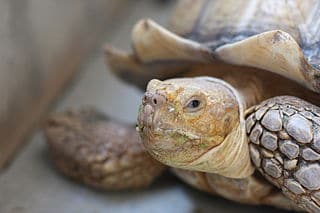
Do not become over exuberant with what the sellers tell you and handle your African spurred tortoises often as this may stress them. Take care, as children will suddenly drop them if spooked. When stressed, the tortoise’s health and activity levels go down.
The big sulcata tortoises normally dislike handling. Handle all tortoises with care. Do not restrict or pin them down. Leave them on their own, particularly with the young ones. Bigger tortoises tolerate handling better.
Learn the Attributes of the African Spurred Tortoise
The African spurred tortoise is an inhabitant of the southern edge of Sahara desert, in Northern Africa. They are the third largest species of tortoise in the world. If you wish to keep one as a pet, make sure you are able to provide them with the right surroundings and temperature. A hatchling will stay indoors mostly and a 20 gallon water tank should suffice, but once they are bigger 60 gallons or more is required for them. Spur turtles grow really fast and will expand tremendously in just a couple of months.
They develop quickly, around 4-6 inches every month, and a male spur may weigh up to 100 pounds, whereas a healthy female could weigh between 70 – 90 pounds. Very old spurs can weigh as much as 200 pounds.
African spurred are herbivores and eat grasses and plants. You can give them a lot of dark and leafy vegetables. They need to have a high fiber diet, the lack of which may lead to disturbance in their digestive tract, worm problems or diarrhea. If you wish to feed them from your garden make sure they are pesticide free. Carrot and squash peelings, rose flowers, its leaves and hibiscus flowers are filled with good nutrients for them. There are many processed foods available in the market for spurs but there might be harmful components in them which might cause health problems.
Many breeders recommend rabbit feed for them because they are soft and will not harm them. They are inexpensive and can be purchased at pet feed shops. African spurs are strict herbivores and you are on no account to feed them turtle berries or cooked food. You can however give them pears and apples and their peels. If your spur is outdoors make sure they stay away from azaleas, as they are toxic. They are insatiable and sometimes overeat.
A weekly bath is recommended for all age of tortoises. A baby spur tends to dry up very quickly and it is suggested you soak them in shallow warm water for three times a week for 15 minutes regardless of whether they are staying indoors or outdoors.
They are extremely strong animals so a fragile accommodation is out of the question. All the fittings and fixtures at your home must be resolutely bolted and your fences and walls must be robust to resist the effort that these creatures will show to overcome them.

Having discovered a fondness for insects while pursuing her degree in Biology, Randi Jones was quite bugged to know that people usually dismissed these little creatures as “creepy-crawlies”.

